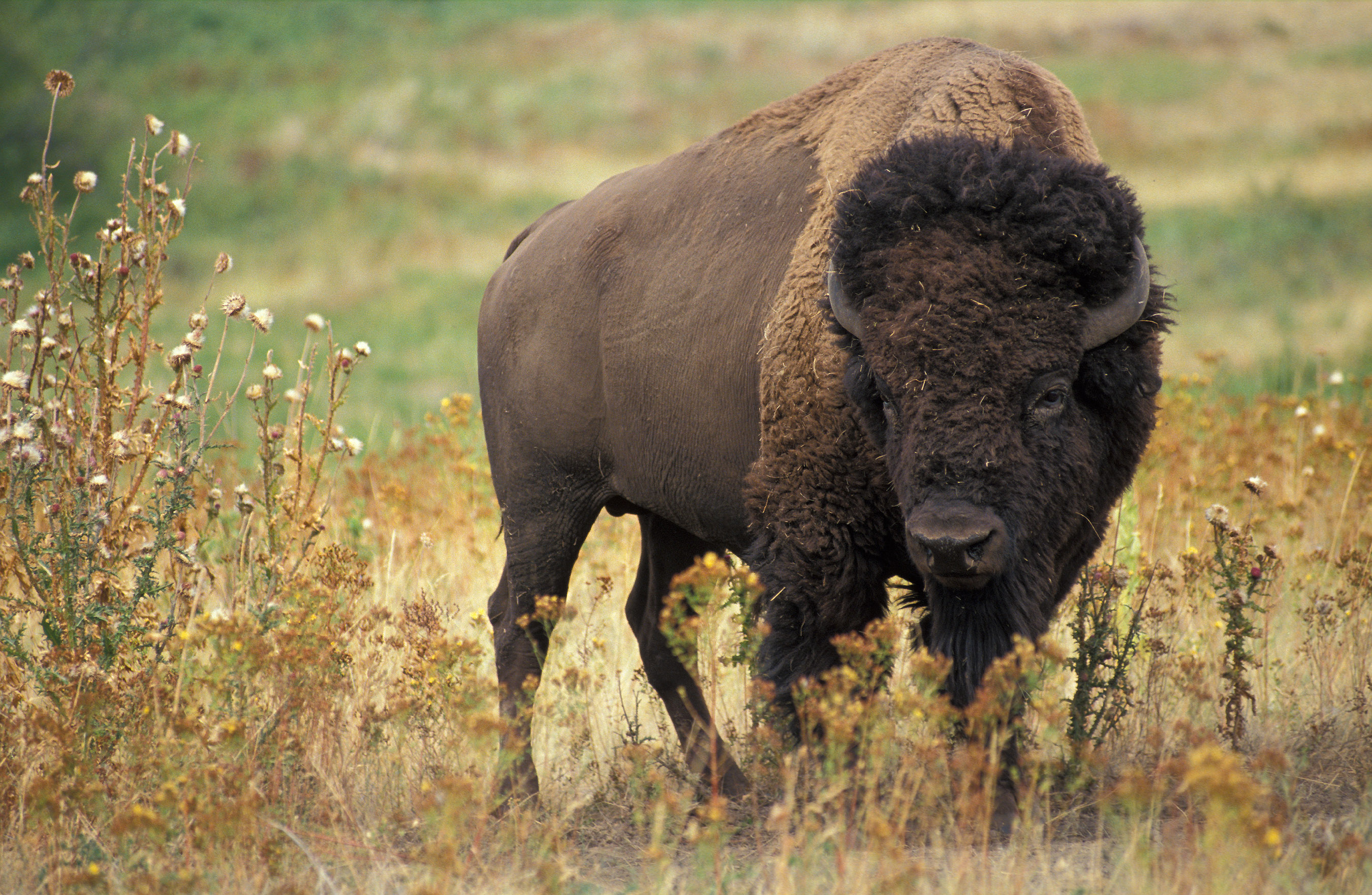Grass seems to be everywhere. On Owl Acres, it covers the yard around the house, the open spaces around the barn, and the ditches along the road. Most of the species are not native to Owl Acres, though. They’ve been introduced as forage species for cattle, or lawn species for the yard. Most of the native grasses like big bluestem, switchgrass and Indian grass succumbed to the plow in the 19th century. But before the plow, and after the last glacier bulldozed Owl Acres, tall grass prairie evolved to occupy the Iowa landscape. Grasses grew six to eight feet high, and prairie wildflowers added color to a sea of greens.
The evolution of the tall grass prairie began after the last glaciers retreated. First, the land was prepared for grass. The glaciers had bulldozed it flat. Dust and dirt blew in from eroding rock to cover it up to 50 feet deep in gritty soil. All that loose soil, blown in from the Great Plains, formed a perfect seedbed for grasslands to get started. If it weren’t for the rain, this land, at about 1,000 feet above sea level, would still be flat as a pancake. But along came the rain, carving rills, rivulets, creeks and rivers into the relatively soft surface. Over thousands of years, this carving process created a lacey network of streams and rivers, and the rolling hills that separated one stream bed from another. Owl Acres sits on one of these hills between two water sheds. The creeks and rivers are not carved through rock like the Potomac or the Colorado. They are carved through dirt. Without rock walls to hold them, the rivers often changed course after a flood.
The region of the tall- and short-grass prairies in North America is actually semi-arid and prone to droughts. Just since settlers began to plow the land some 165 years ago, farmers have seen many drought years, the worst of which to date being the dust bowl years of the 1930s.
The center of the North American continent provides a playground for the winds from all directions. Colder, dryer winds from the north meet warmer wetter air from the Gulf of Mexico. Winds from the west leave their moisture on the west side of the mountains and come to play with their northerly and southerly partners. With no mountains to slow them down, these winds dance and play at will, creating soft breezes and derechos, thunderstorms and tornadoes, and most often stiff breezes that blow across the wide open spaces day after day after day. Dry winds from the southwest deserts also take a role in what turns out to be a climate of extremes. With no oceans to moderate the climate, temperatures at Owl Acres range from about 40 degrees below zero to 110 degrees above. Rainfall is erratic. Some years are lush. Some years are dry.
Trees need a lot of moisture to thrive, and the vast dry spaces of the Midwest and Great Plains supported trees only along the waterways.
Prairie grasses, on the other hand, have evolved specifically to survive this semi-arid, drought-prone landscape with its seasonal extremes. They develop deep and extensive root systems which reach far down into the soil to find water. 60 to 80% of the plant is actually underground comprising a dense tangle of roots. When life is good, the grass sends up its long narrow leaves to catch the sun. These leaves are particularly adapted to conserve moisture. When there’s not enough moisture to do everything, the leaves send their nutrients down to the roots, turn yellow or brown, and lie dormant until it rains. This dormancy may last for a season, a year, or a decade, waiting for water.
Prairie fires, set by humans or caused by lightning, raged across the landscape, consuming the dry above-ground part of the grasses, incinerating young trees, and opening up space for new shoots. Meanwhile the below-ground portions of the grass—its dense tangle of roots, and its growing tips–prepared for the next spring. If it found sufficient moisture to warrant sending up new leaves, the prairie would turn green to capture the sunlight. If not, it would wait.
After the latest ice age, giant mammals such as wooly mammoths, mastodons, giant beavers, horses, camels, caribou, muskox, elk, sloth and bison, along with snails, rabbits, voles and foxes helped shape the ecology of the prairies. Some 10,000 years ago as the climate warmed and changed, the largest of these became extinct, probably because they could not adapt to a warming climate. The smaller animals we know today were able to adapt and to populate the prairie.
This new, warmer climate eventually gave rise to the dense, varied tall grass prairie that Europeans found in the 18th and 19th centuries. This new ecosystem, which is nearly as rich, diverse and complex as the virgin rain forests of Brazil, waved its flowers and grasses up to eight feet high. It included some 60 species of grasses and over 300 species of wild flowers. At least 31 species of mammals called it home, along with, 150 types of birds and 30 varieties of reptiles and amphibians. Elk, antelope, deer, bison and prairie dogs grazed, while wolves, bears, mountain lions, and coyotes hunted. Ferrets and rabbits, badgers, prairie dogs and raccoons patrolled, and billions of insects, including several varieties of mosquitos, fed the birds and reptiles. It wasn’t all above ground, though. In a square yard of soil 20 inches deep, you could count 110,000 insects, spiders and their relatives, and 5.4 million worms of various sizes and forms. And at the top of the food chain, native people hunted, fished, raised crops and gathered over this fertile and abundant land, including Owl Acres.
Photo by: Jack Dykinga
